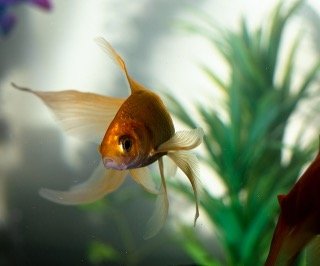
Introduction
Fish TB, often known as fish tuberculosis, is a terrible zoonotic disease that can infect people through polluted water or open wounds and kills fish. A number of pathogens from the genus Mycobacterium are the source of fish TB. This condition may be caused by any one of a number of infections, making it a passive carrier of at least ten distinct Mycobacterium.
Poor handling has been reported to allow this severe sickness to spread from fish to owner. A large predatory fish’s nip or a catfish’s sharp spine can spread the infection to your open wounds, where sores may develop months later when the bacteria has had time to incubate in your body.
What exactly is fish TB?
It is the name of a fish that has Mycobacterium spp. infection. The Mycobacterium genus has a barrier that prevents most treatments from penetrating it. Regular fish fatalities unconnected to other illnesses or water conditions are typically the cause of this illness. It is infamous for quickly eliminating vast schools of fish one by one.
Aquarists will struggle to save diseased fish through treatment because this bacteria is difficult to eradicate, and once a diagnosis is made, the condition is typically terminal. A fish with fish TB should be humanely put to death because the disease is fatal to fish and takes a very long time to manifest itself in organ failure or starvation.
How Does It Continue to spread?
Poor handling has been reported to allow this severe sickness to spread from fish to owner. A large predatory fish’s nip or a catfish’s sharp spine can spread the infection to your open wounds, where sores may develop months later when the bacteria has had time to incubate in your body.
Your fish will quickly decline as a result of this sickness’ quick action. The Mycobacterium can remain undetected in a healthy fish’s system for several months, and this sickness is very contagious among various species. This makes quarantine, which typically lasts between a week and a month, easy to go through.
You may also like to read Why Don’t Goldfish Live Longer?
The signs of fish tuberculosis
It is important to distinguish the symptoms from those of other, more curable, less serious disorders. Your fish most certainly has fish TB if they exhibit more than five of the symptoms listed below.
(i) recessed belly (even if they are eating)bigger eyes
(ii)Lethargy Weakness
(iii) appetite loss resulting in anorexia
(iv) Stringy feces (empty casing from poor appetite)
(v) Skin blemishes
(vi) open wounds
(vii) Bones could protrude due to lack of weight.
(viii) using up flesh
(ix) spinal irregularities
(x) missing scales
(xi) muscles with nodules
(xii) Emaciation
(xiii) Ulcers
(xiv) systemic failure
(xv) Shark erosion
Prevention Procedures
Even if you adhere to the advised quarantine period, this is one of the hardest viruses to detect. Send the contaminated fish for testing to see whether it actually has fish TB. Even if the other healthy fish do not exhibit symptoms, they may still be harboring this disease.
(i) if the disease is not present, avoid sharing nets, siphons/gravel vacuums, equipment, and accessories between tanks.
(ii) Before handling fish food or performing tank maintenance, wash your hands with an antibacterial soap.
(iii) Including a dechlorinate with added Vitamin C
(iv) Feed animals wholesome fare.
(v) For clean water, use a biological filter with activated carbon, ammonia chips, and filter wool.
(vi) Make regular water changes.
(vii) Before adding fresh fish to the main tank, quarantine them for 4 to 6 weeks.
(viii) Remove any sick fish right away, and vacuum up their waste in gravel.
How IT Spreads Among Fish
(i)This disease can spread quickly through schools of fish that appear to be in good health.
(ii) It is primarily spread by non-infected fish eating the feces of an infected fish.
(iii) This happens frequently because many fish would taste the feces of their tank mates thinking it is food.
(iv) Additionally, it might be found in the tank’s water column, filter media, and decorations.
(v) As a result, it is challenging to stop the tank from being entirely infected after one fish becomes ill with fish TB.
The Zoonotic Features of This Disease
It is possible for different Mycobacterium strains to spread from fish to handler. Although extremely uncommon and treatable in humans, precautions should still be taken. People with low immune systems, women who are pregnant or nursing, people who are already ill, and people who have chronic medical conditions that lower immunity should be extra concerned about the illness.
Conclusion
Many fish keepers are unaware of this devastating condition, which is especially difficult for aquarists to understand. Treatment is rarely effective, and it could be challenging to control affected populations. Even though it is zoonotic, it’s crucial to keep in mind that only a few cases of this ailment have been reported, making it uncommon among aquarists. In addition to being found on uncooked fish, the Mycobacterium is also found in numerous lakes, oceans, and rivers. The greatest thing you can do is follow good hygiene practices and use our treatment sheet on diseased fish.





